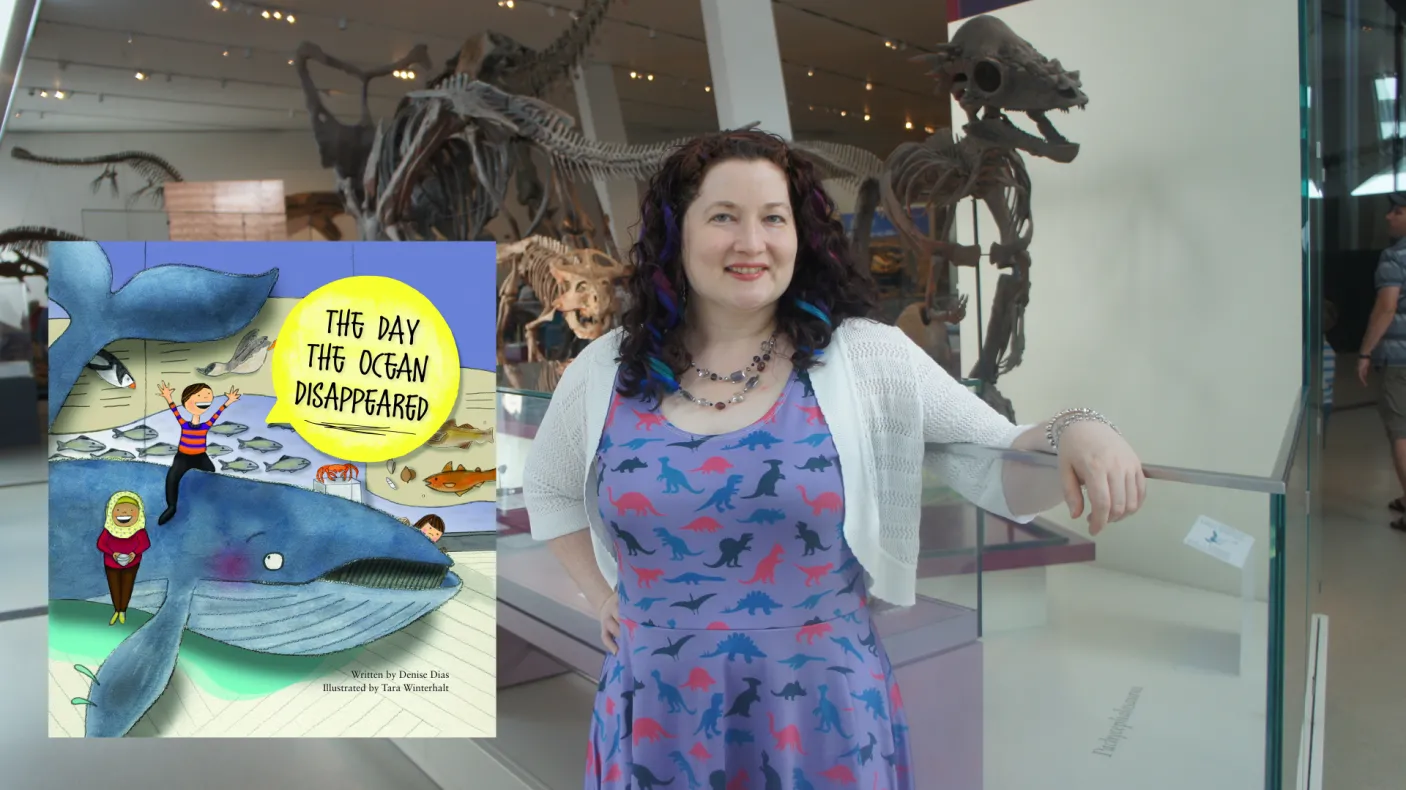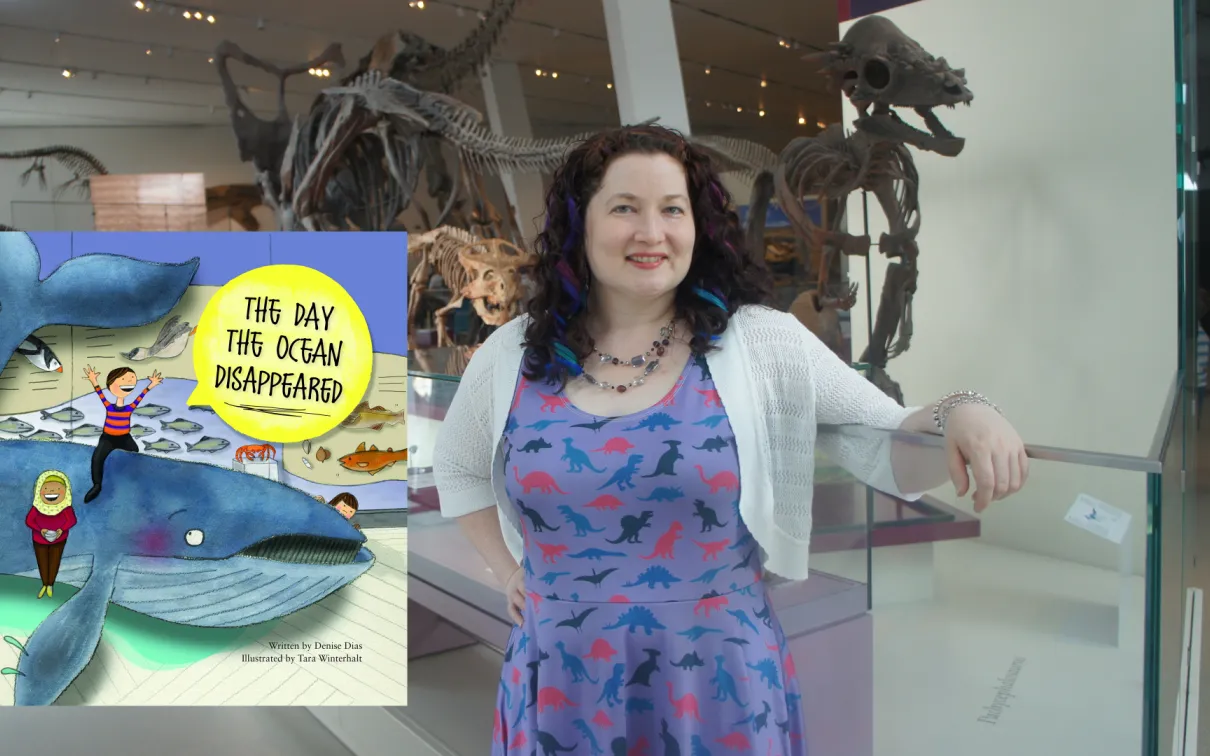ROM Storytime: “The Day the Ocean Disappeared” by Denise Dias
Category
Audience
Age
About
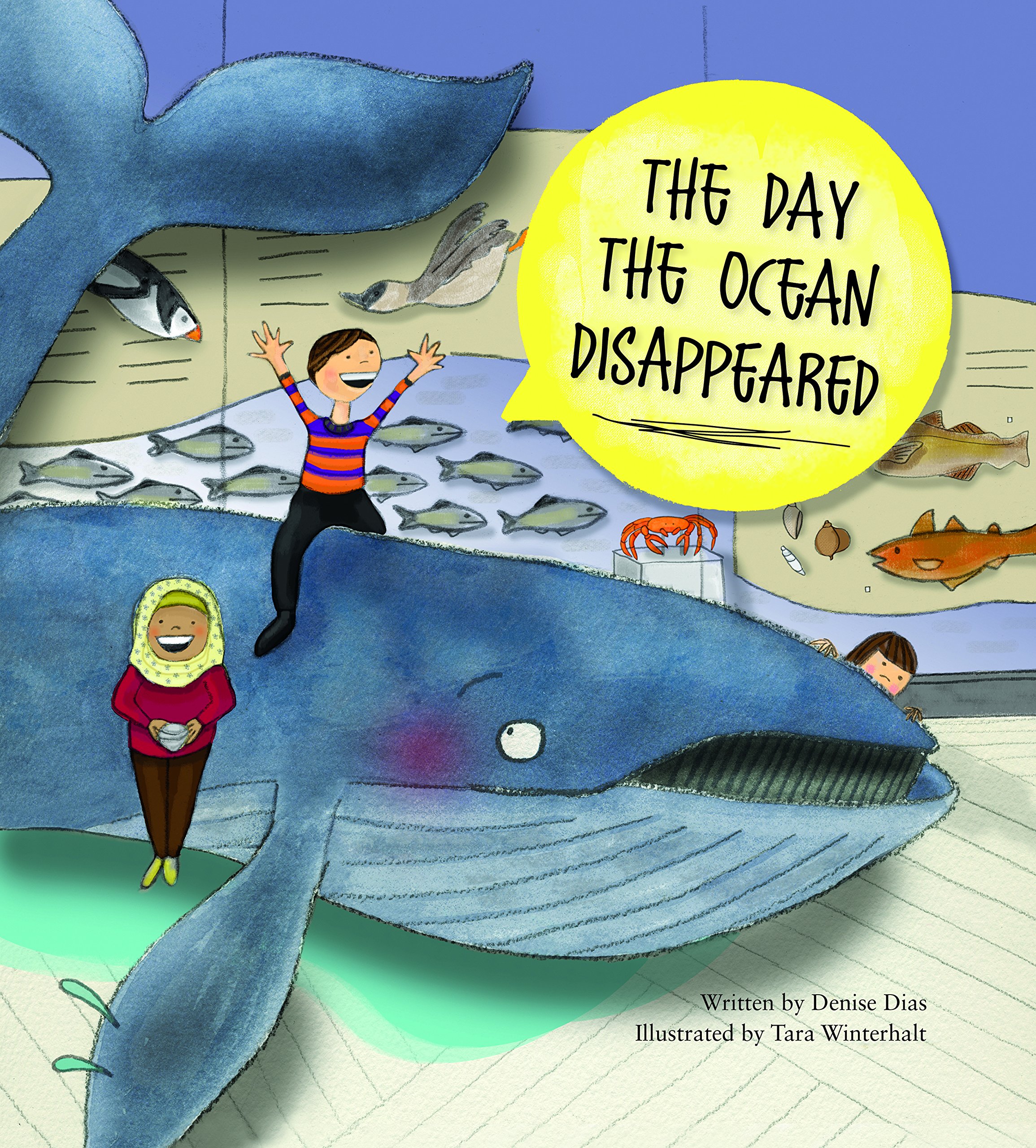
Visit ROM Storytime for a discussion of children’s books for young learners with ROM educator Sarah Elliott.
This week, we explore The Day the Ocean Disappeared by Denise Dias, illustrated by Tara Winterhalt. Stay tuned after the story summary for a Q&A on how the story connects to ROM objects, and try a story-inspired creative activity.
The Day the Ocean Disappeared was published by the Royal Ontario Museum with the support of Nita and Don Reed in honour of their grandchildren – Zella, Max, Bennett, Kyle, and Molly.
Creativity Challenge
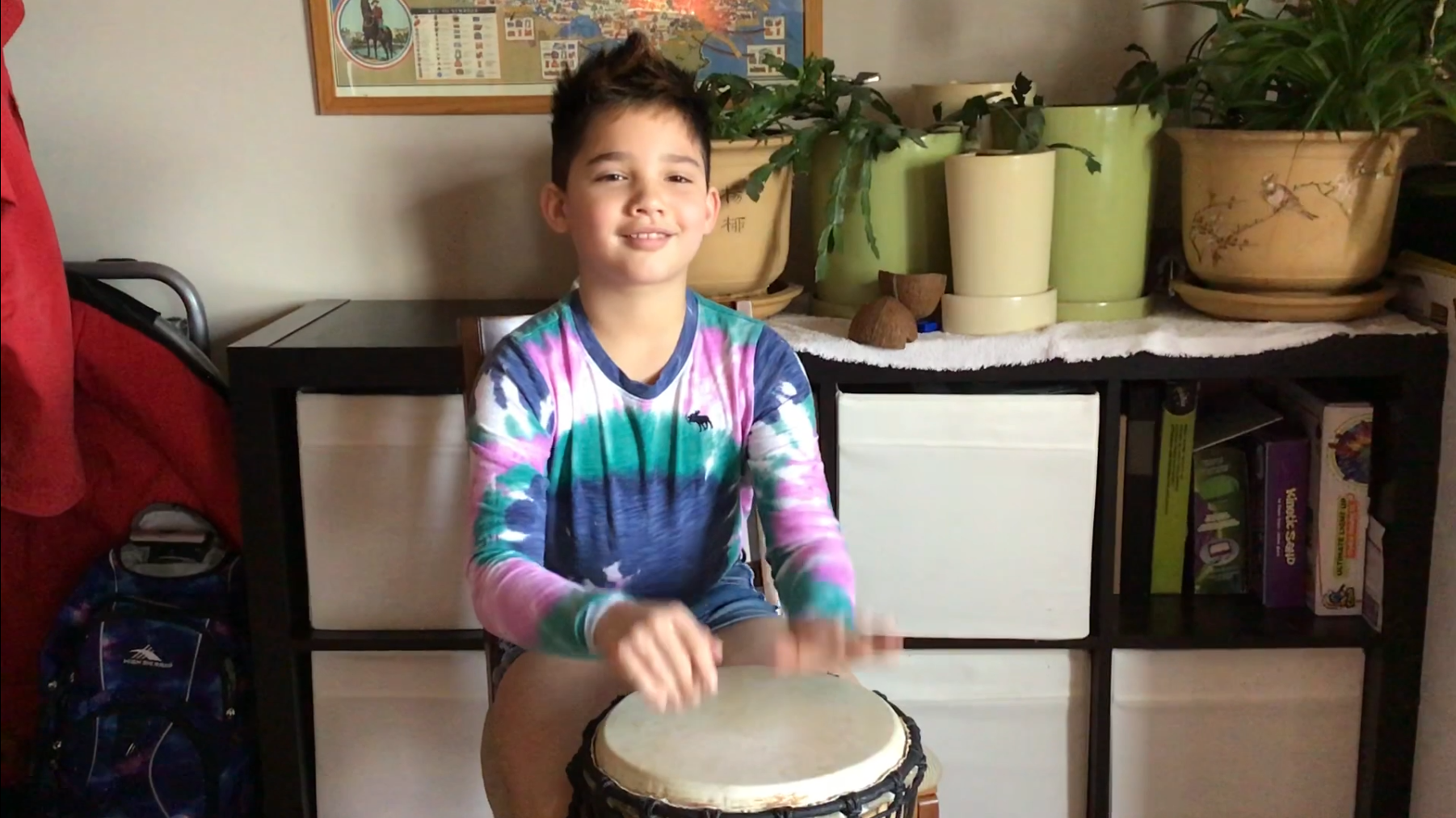
An exhibition like the ROM’s Out of the Depths: The Blue Whale Story is full of amazing and astonishing facts, just like the book The Day the Ocean Disappeared. Sometimes, you learn so many weird and wonderful facts that you just need to share them with the world!
When the Grade 4 students at Saint Cecilia Elementary School visited the museum in 2017, they knew exactly how to share what they learned: by setting it to music!
For the creativity challenge this week, let the Saint Cecilia students inspire you to share what you learned about whales in song.
Creativity Challenge
- Make a list of the whale facts from this week’s story that you want to share.
- Add any other facts that you know, or that you learned from doing research — check out the Blue Whale Project virtual exhibition on Google Arts & Culture for more ideas!
- Think of a melody you know, or make up a new one, and fit your facts to the music.
- You can create music with apps like GarageBand, make some homemade instruments, find a karaoke version online, or just use your own voice to put your Whale Song together.
- Share your whale songs with us @ROMtoronto #ROMathome
Frequently Asked Questions
How do whales get water to drink?
Sea mammals like the blue whale can get a lot of the water they need from the food that they eat. The sea water that they also drink would be too salty for a land mammal like a human, but whales have specialized kidneys that filter the salt out of the seawater for them. (They get rid of the salt in their pee!)
How many babies do whales have?
Like humans, whales usually have one baby at a time. A newborn calf is already one of the biggest animals on Earth at 7 metres long and weighing almost 3 tonnes. The baby will stay with its mother for at least a year, drinking up to 200 litres of milk from its mother every day for the first six months. A nursing blue whale can gain up to 4.5 kg (or 10 lbs) an hour!

How did blue whales evolve?
The skeleton of Blue in Out of the Depths: The Blue Whale Story gives us a clue. Blue had the remains of a pelvis, which means that the ancient ancestors of blue whales had four legs and walked on land! The ancient ancestors of blue whales would have resembled Pakicetus, a predator that lived about 50 million years ago. It looked a little like a cross between a wolf and a weasel, hunted in lakes and rivers like an otter, and had hoof-like nails on its toes instead of claws.
Explore More

Saint Cecilia: ROM Blue Whale
See the full original Blue Whale music video from Saint Cecilia Elementary School.
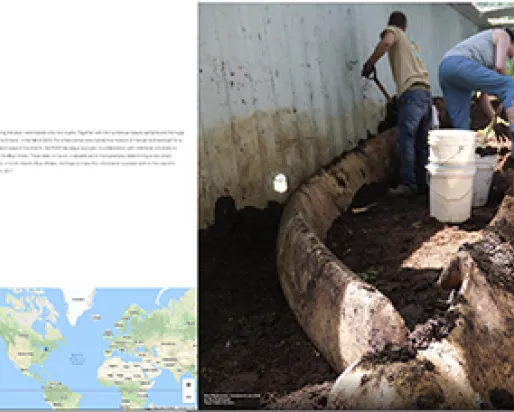
The Blue Whale Project
Explore the Blue Whale Project virtual exhibition on Google Arts and Culture to discover how Blue’s massive skeleton made it to the ROM.
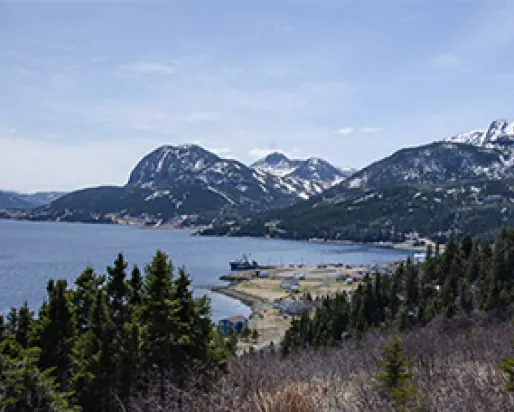
ROM Research: Blue Whale
A view from a hillside of a small town on the ocean with mountains in the background.
